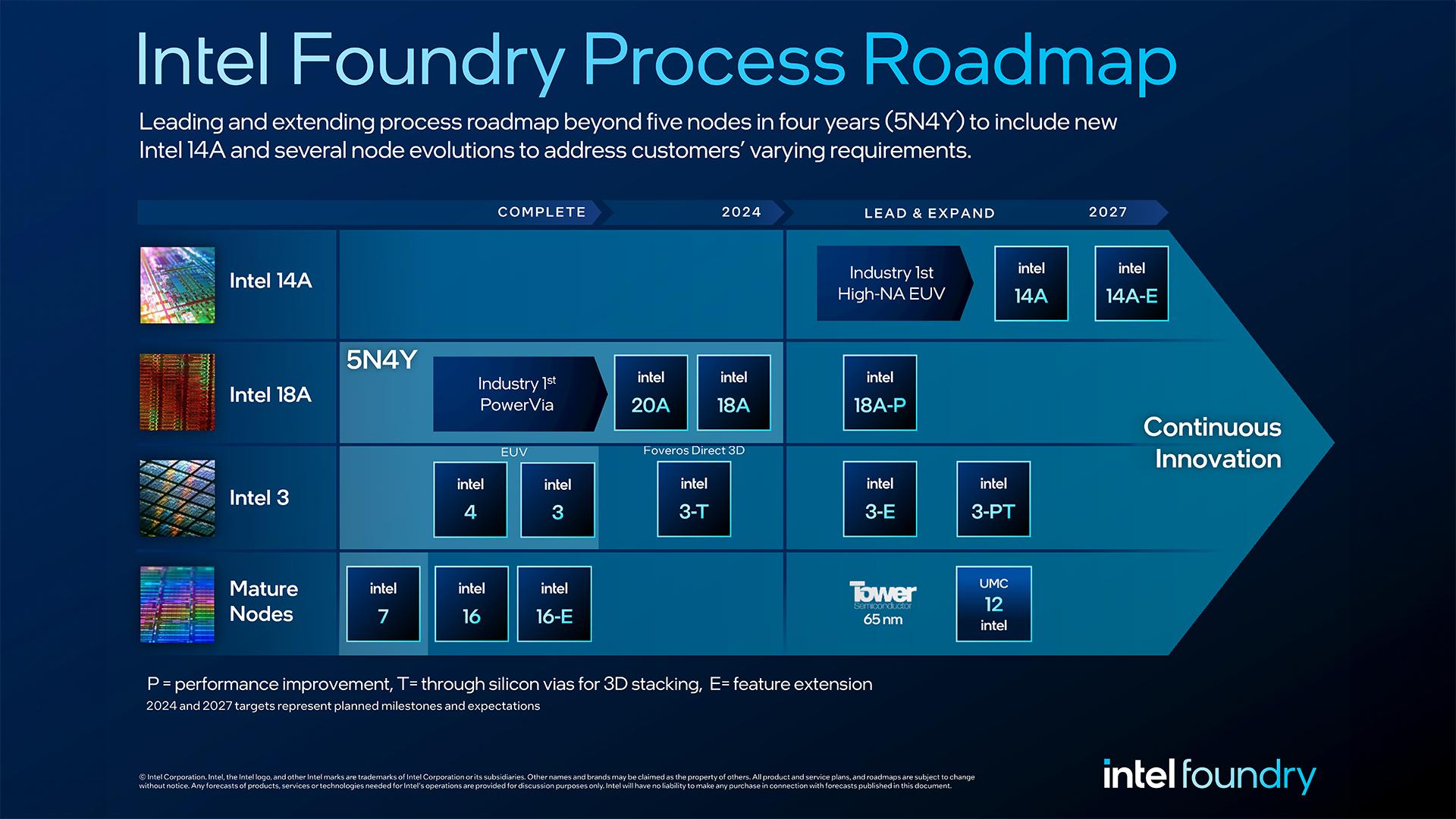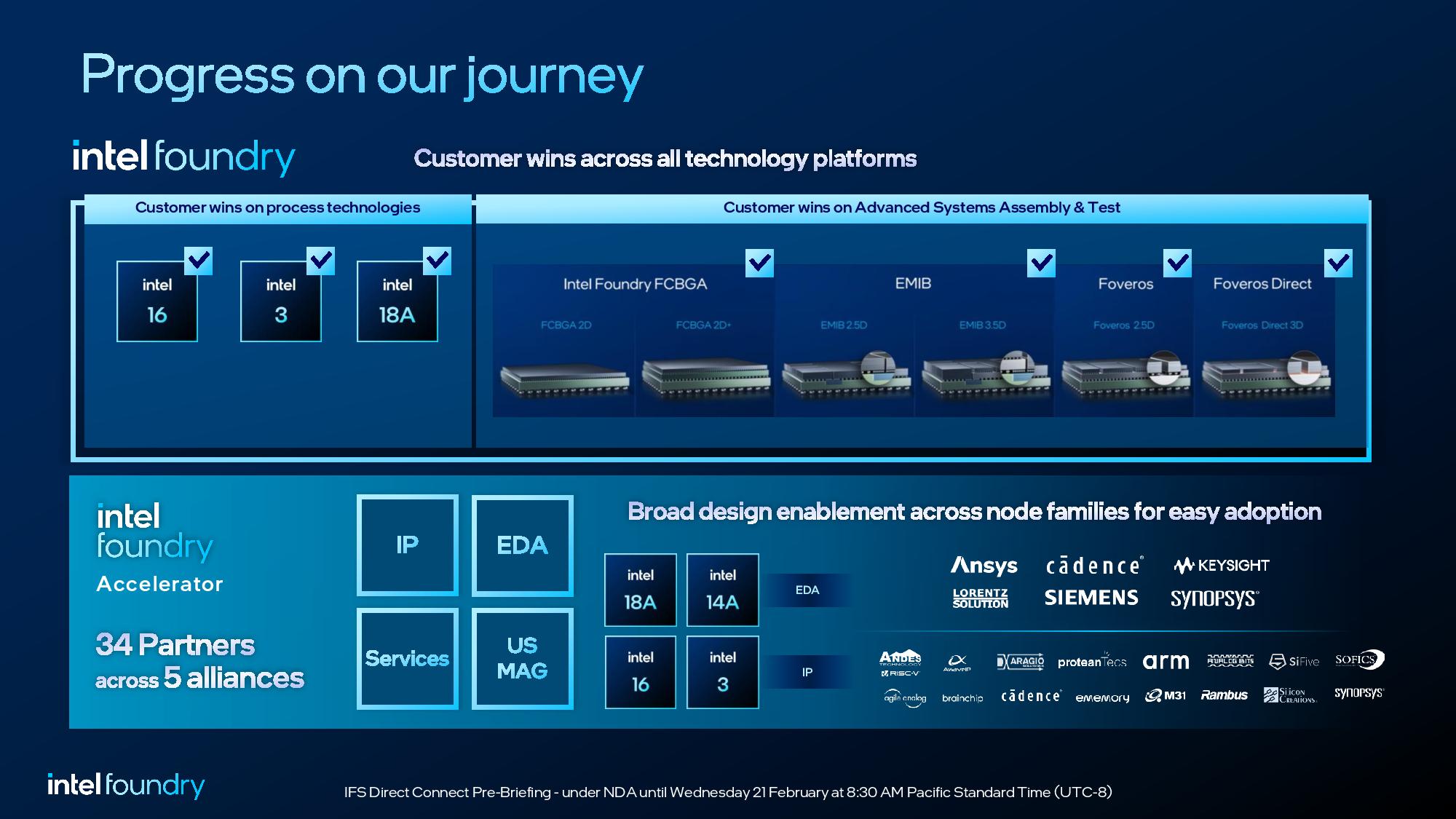[ad_1]
Intel held its inaugural Intel Foundry Providers Direct Join occasion at the moment. It primarily marks the launch of Intel’s new manufacturing technique, bringing all of its buyer manufacturing, system design, packaging and connectivity options below one umbrella.
Through the occasion, Intel outlined its new course of roadmap which included the announcement of its 14A node. It is estimated to hit the market in 2026 or 2027 and marks the primary node to utilize Excessive-NA lithography. It is anticipated to include PowerVia bottom energy supply and RibbonFET GAA transistors. Suffice to say, these things is bleeding edge.
Intel did not present data on what merchandise can be constructed on the brand new node, however it’s protected to say enterprise tier merchandise can be a precedence, although shopper laptop computer and desktop chips are positive to learn from it too.
The announcement of the 14A node follows what has turn out to be often called Intel’s ‘4 nodes in 5 years’ roadmap, which is now all however accomplished. It started with the launch of Intel 7, which is the node used to make twelfth, thirteenth and 14th Gen processors. Components of Meteor Lake are constructed utilizing the Intel 4 node. Intel 3 is much less related to shoppers as it’s used for Sierra Forest and Granite Rapids Xeon households.
20A is the place it will get fascinating for shoppers as its the node Intel will use to construct its Arrow Lake CPU household, which is predicted to reach later within the 12 months and change the present 14th Gen desktop lineup. Past 20A lies 18A, which is ready to begin manufacturing later in 2024. Intel’s next-next Gen Panther Lake CPU household is predicted to make use of this node.

This aggressive technique was seen as very dangerous, particularly given the well-publicized points and delays Intel had with its 14nm and 10nm nodes. So, the truth that Intel has just about pulled it off could be very spectacular. Intel stays assured that it might probably take again the method management crown from TSMC with its 18A node.
The Direct Join occasion is not all about Intel’s personal chips. Removed from it. It is about opening up its manufacturing services to exterior companions. Intel says it hopes to turn out to be the world’s second largest foundry—behind solely TSMC— by 2030.
It is on the suitable path too, scoring Microsoft as a buyer for chips constructed on its 18A node. Microsoft CEO Satya Nadella mentioned: “We’re within the midst of a really thrilling platform shift that can basically rework productiveness for each particular person group and your entire business”.
Hmm, what might that imply? My assumption is it is a customized AI chip. Intel says that after every little thing is factored in, the deal could possibly be value as a lot as $15 billion over its lifetime.

Microsoft is not Intel’s solely design and manufacturing win. Different accomplice corporations embrace Ericsson, Cadence, Keysight, Lorentz, and Siemens. Intel additionally introduced a collaboration with Arm, describing it as an “Rising Enterprise Initiative”. That is a growth that holds lots of potential. Intel is unquestionably having discussions with the likes of Qualcomm and Broadcom, however simply think about if it might land Nvidia or Apple as clients? That will characterize a seismic shift within the semiconductor business.
Intel has its work lower out to beat AMD within the server CPU area, and it isn’t managed to experience the AI wave anyplace close to as a lot as it might have appreciated, however with its aggressive roadmap and foundry technique, it is laying the muse for an enormous second half of the last decade.
[ad_2]
Source link

